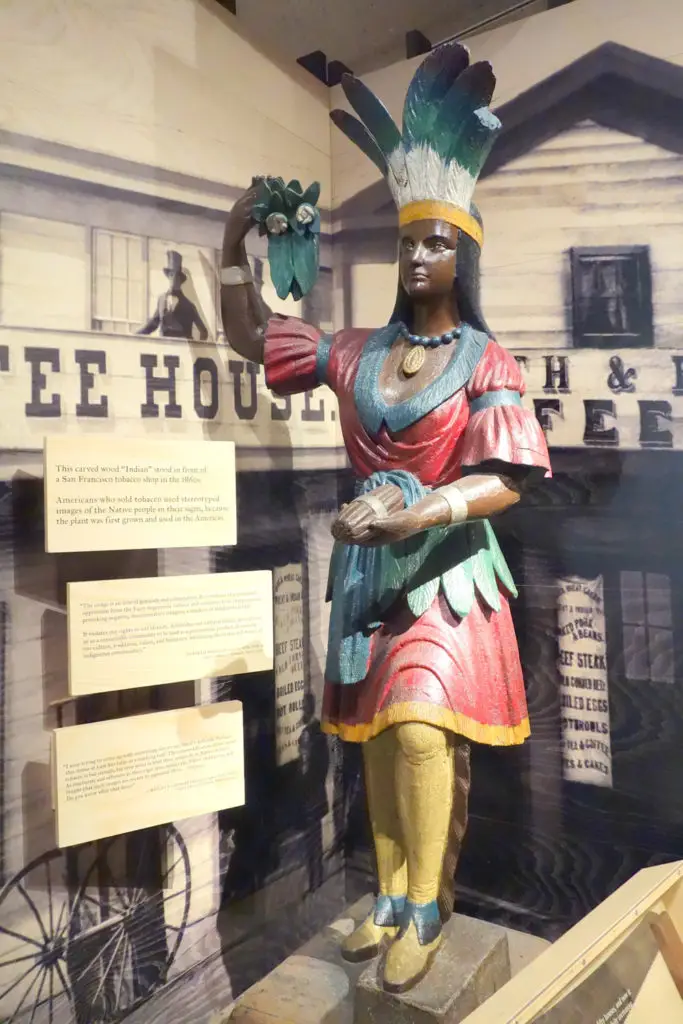
Last week, the guys were asked what the history behind carved Native American statues is, and why they are so closely associated with cigar shops.
Appropriation or Appreciation?
Cornelius dives a bit in to the history of these statues by sharing his experiences when he first purchased his cigar lounge in Denver (Capitol Cigars, 919 E. Colfax ave.).
When he first moved into the shop, there was a full sized carved statue sitting outside of the shop.
Although he was not personally a fan of the idea, he would notice that Native members of Colorado’s population would often stop and observe the statue.
Finally, Cornelius decided to open up dialogue and learn a bit more about history behind the statues, and what they represent.
An appreciation of culture:
It turns out, that this is not an appropriation of cultures, but an homage to the origins of tobacco.
When Europeans started coming to the Americas, and learned about tobacco, and its place in Native American culture, they decided to bring it back and share it with Europeans back home.
The statue was put in front of tobacco shops as a recognition of quality tobacco, grown by the best cultivators in the world: Native Americans.
What makes a Native American reference insulting?
You may be asking, if this is accepted in Native American culture, why the backlash when it comes to, say, some sports mascots.
The answer is quite simple. When references to Native American culture are made to depict their heritage as cartoony, or aloof (Like the Cleveland Indians) it is an insult to their culture.
On the other side of the spectrum, when the culture is represented as savage or bloodthirsty (The Fighting Sioux) that too is a nod of disrespect to their heritage.
It is a fine line between appreciation and appropriation, but we are happy to know the tobacco community falls on the right side of history here.
Have your own cigar related questions? Send them on in to [email protected]. We’ll pick our favorites every week, and maybe yours will get an answer.